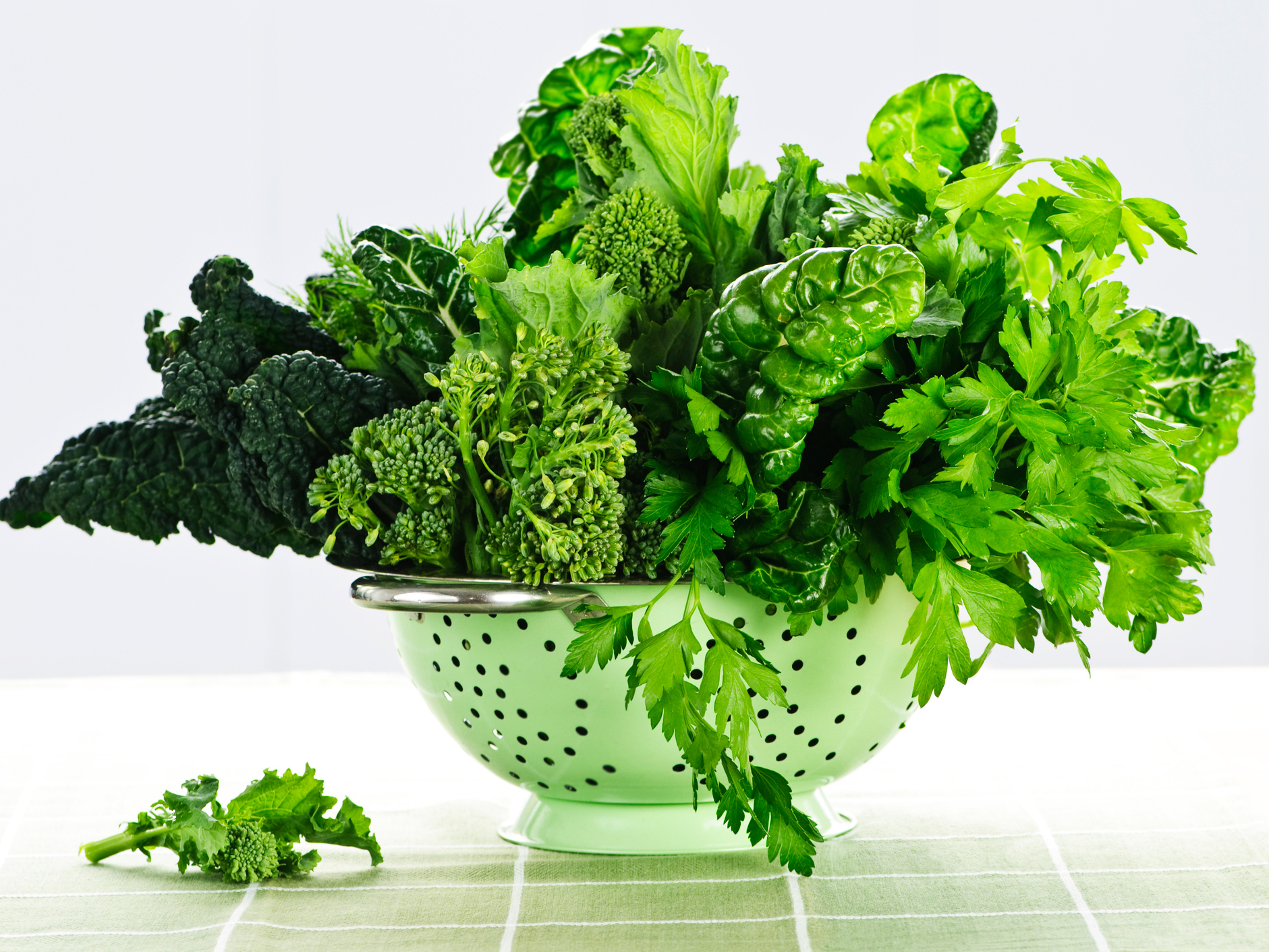Get Easy Health Digest™ in your inbox and don’t miss a thing when you subscribe today. Plus, get the free bonus report, Mother Nature’s Tips, Tricks and Remedies for Cholesterol, Blood Pressure & Blood Sugar as my way of saying welcome to the community!
6 great greens and what they do for your body

You’ve heard it said, over and over. Probably since you were a child, in fact.
“Eat your vegetables!”
If you’ve been with us a while, you know we say it, too. Those leafy, green vegetables, in particular, are probably the best things you can include in your daily diet.
They provide fiber, iron, and a host of vitamins. They strengthen your bones, your brain, your heart, your immune system. They prevent cancer, heart attacks, obesity, and osteoporosis.
Just pick a green vegetable and get going, right?
Well, not exactly.
There are probably more green, leafy choices than you’re aware of, and each has its own merits as a healthy part of your diet, as well as its own distinctive flavor and texture.
Here’s a primer on the nutrient value, benefits, and pleasures of 6 of those leafy greens…
The top 6 picks for great greens
Arugula. This fragile-looking green is more nutrient-dense than carrots, tomatoes, even sweet potatoes.
Although it may not appear so, arugula belongs to the family of cruciferous green vegetables that includes broccoli. A compound called sulforaphane in this group of veggies is known to stop cancer growth.
Arugula contains a substantial amount of lutein and zeaxanthin, the only members of the antioxidant family known as carotenoids that accumulate in the retina of the eye. These two carotenoids are known to protect against macular degeneration, an eye disease that causes more blindness than cataracts and glaucoma combined.
Arugula’s peppery flavor makes it a great addition to your green salads.
Chard. Frankly, this is one of the green vegetables I’ve largely ignored, but no longer. Actually called Swiss chard because of its country of origin, this green has leaves similar to spinach or kale, with long stems that cook kind of like asparagus would.
Chard stems can be red, green or yellow. At your grocer’s you may see a bundle of combined colors sold as “rainbow chard.”
Chard is in the same family as beets. It offers 636 percent of our daily requirement of Vitamin K. Most people don’t talk about this vitamin, but it is absolutely crucial. Not only does it aid in blood clotting, but it also saves you from heart disease by activating a protein that helps prevent calcium from depositing in your arteries.
Kale. This crunchy, curly-leafed green has become the darling of health gurus in recent years, and with good reason.
Kale is right up there with chard in the vitamin department. It offers 206 percent DV (daily value) of Vitamin A, 684 percent of Vitamin K, and 26 percent of manganese, another neglected mineral that, together with glucosamine, is a therapeutic agent for relieving the inflammation of osteoarthritis.
Mustard greens. Yes, these are actually the leaves of the mustard plant, and they have a sharp, spicy flavor. Crunchy and nutrient-dense like kale, they are very high in chlorophyll, that natural plant pigment that does so much more than make plants green.
Chlorophyll stimulates the production of enzymes that detoxify the liver. It is a natural wound healer as well. Since the 1940s, a medical form of chlorophyll has been used in ointments that treat skin ulcers and pressure sores.
Bok Choy. Also known as Chinese cabbage, bok choy is used in soups and stir fries. It has crunchy white stems and delicate green leaves. Bok choy is also a cruciferous vegetable and has many of the same benefits as broccoli and Brussels sprouts, including natural compounds that lower cancer risk.
Spinach. No list of dark, leafy greens would be complete without spinach. You may think you know it well, but did you know, for example, that it can prevent blindness?
That’s right. Spinach is rich in two specific carotenoids, zeaxanthin, and lutein, that support eye health and guard against macular degeneration, the leading cause of vision loss in people over 50.
Spinach is also one of the richest dietary sources of quercetin, the antioxidant that inhibits the production of inflammation-causing cytokine proteins. This green also helps your body produce nitric oxide, a natural artery health and circulation booster the body needs certain foods to make more of.
Greens can be enjoyed year-round: a salad of mixed green vegetables is great for warm weather months or added to a hearty soup when the months are colder. How ever you get them–just do it!
Editor’s note: Did you know that when you take your body from acid to alkaline you can boost your energy, lose weight, soothe digestion, avoid illness and achieve wellness? Click here to discover The Alkaline Secret to Ultimate Vitality and revive your life today!
Sources:
- 10 Evidence-Based Benefits of Manganese — Healthline
- Spinach 101: Nutrition Facts and Health Benefits — Healthline
- All About Chard: Rainbow, Red and Swiss — The Spruce Eats













